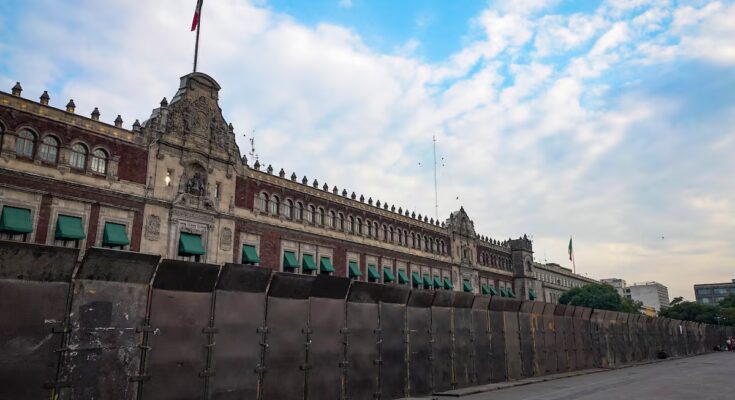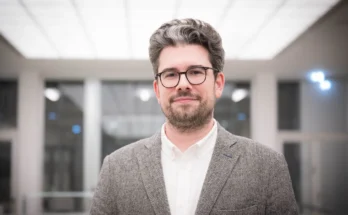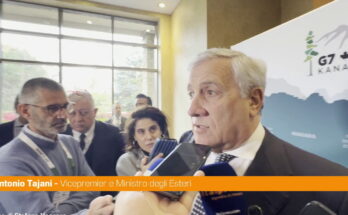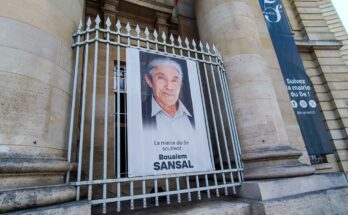The National Palace woke up this Wednesday completely armored. High metal fences surround the building, the Zócalo, the Palace of Fine Arts and the Angel of Independence, among other buildings and monuments in the Historic Center. The capital is thus preparing for the mobilizations of Generation Z, called through social networks for a protest next Saturday, and for the sit-in of the National Coordinator of Education Workers (CNTE), scheduled for Thursday and Friday. This morning Sheinbaum questioned the authenticity of the youth movement and criticized the support the call has received from the likes of former president Vicente Fox: “They don’t even reach the chavorrucos,” he joked.
Sheinbaum defended the decision to wall up the National Palace, assuring that the measures aim to “protect people’s lives” and prevent damage to historical monuments. The president insisted that the fences were not intended to prevent the demonstration, but rather to avoid clashes, recalling the violence of previous CNTE demonstrations in the capital. “The fences were put up several days ago because there are also marches by the Coordinators and we want to avoid provocations,” he said. “The last time it happened, journalists were beaten and there were violent actions, which perhaps were not by teachers, but by some provocateurs,” he said.
The president also took the opportunity to criticize the opposition and political figures who, according to her, tried to appropriate the appeal of young people. “It is important for citizens to know who is behind the march,” he said. “Some adults, not necessarily from that generation, are promoting it or have taken advantage of the call. It’s critical to know who is really calling.”
The president argued that protests are a legitimate right, but insisted that the call was flawed. “Who’s calling? What’s his name? Who’s coming?” he asked. Sheinbaum ironically referenced former president Vicente Fox and members of the Institutional Revolutionary Party (PRI) who expressed their support for the movement. “Fox has already said that he will come to the march, he doesn’t really belong to generation Z… the PRI members of the Chamber have already said so. In short, a lot of people who are not necessarily… not even the chavorrucos are coming.”
Sheinbaum also alluded to the presence of groups such as the black bloc, which he defined as “provocateurs”: “They join the demonstrations and use various devices to burn. We have the responsibility to take care of the National Palace, it is a historical monument, a symbol of our country.”
Cesar Cravioto, secretary of the government of Mexico City, expressed himself along the same lines, justifying the security operation. “They make analogies with what happened in Nepal by saying that everything needs to be burned, so it’s better to be safe than sorry,” he said in an interview this morning with Group of formulasreferring to the Generation Z movement. “Mexico City is a city of freedom, but we will control who comes with a hood and a backpack. Ask those who march to give us the opportunity to control what they bring. Who knows what they hide behind the hood.” Last October, clashes between demonstrators and police in the capital’s Zócalo, during the annual protest against the Tlatelolco massacre, left several injured in hospital, amid the looting of shops by hooded men.
This is not the first time Sheinbaum has questioned the nature of the movement known as Generation Z Mexico, which has recently attracted attention. Since last week, the president has charged that much of the content promoting the mobilization comes from accounts without verifiable identity. “It’s amazing that it’s full of artificial intelligence,” he said.
The national call was reportedly launched by young people who identify as part of Generation Z – people born between the late 1990s and the mid-2000s – and who have expressed their intention to take to the streets to demand an end to violence, greater access to education and better working conditions. It is a movement driven by a wave of youth discontent that has traveled the world from Nepal to Morocco, Peru and Madagascar. The movement presents itself internationally as an apolitical movement, although in Mexico it has been accused of being linked to opposition parties. Activity around the movement has increased after the recent assassination of Uruapan’s mayor, Carlos Manzo, which was used as a flag of outrage over the violence plaguing the country.
Cravioto acknowledged that “several issues have been conflicting” around the march and insisted that local authorities do not intend to limit freedoms, but rather to ensure safety. The president’s relationship with demonstrations, especially youth ones, has been the subject of criticism since the time she was head of the capital’s government. In those years, the use of fences, encapsulations and police interventions in the face of feminist or student protests had already generated questions about the way they managed public space.



